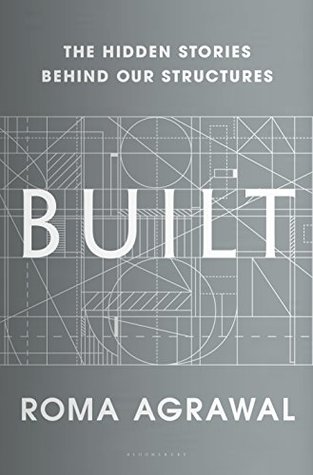More on this book
Community
Kindle Notes & Highlights
by
Roma Agrawal
Read between
June 27 - August 7, 2023
He ran it as a private business, rushing his team to burning buildings, where they intimidated and drove away rival firefighters, then stood about until Crassus had negotiated a price to put out the fire with the building’s distraught owners. If no deal could be reached, the firefighters simply allowed the structures to burn to the ground. Crassus would then offer the owners a derisory sum to purchase the smoking site. This meant that he quickly managed to buy up much of Rome, and amassed a fortune as a result. Fortunately, modern-day fire brigades work on a more honest basis.
By ‘older’, he meant more than 50 million years old. Long ago, igneous (volcanic) rocks were weathered and transported by water, wind and ice. While the rocks and stones were being carried along, they picked up particles of other minerals such as quartz, mica, lime or iron oxide.
That’s because the pozzolanic chemical reaction did not need carbon dioxide from the air to help it along: the mixture could harden without
The insulae were noisy: even after glass windows were invented and replaced shutters, they couldn’t keep out the constant commotion of Roman street life. Before dawn, the bakers were out clanging their ovens. Later in the morning, teachers would be shouting out their lessons in the squares. All day you could hear the constant hammering of the gold beaters, the jangling coins of the money changers, the cries of beggars and of vociferous shopkeepers trying to strike a bargain. At night, dancing, drunken sailors and creaking carts added to the din. But worse than the noise and lack of sanitation
...more
The centering could then be removed and the arch would remain standing. The construction of domes followed the same process, but used a hemispherical timber centering. Everyone believed this was the only way to build a dome. Brunelleschi disagreed. He presented a model to the committee that was 2m wide and almost 4m high, made from 5,000 bricks, which he said had taken just over a month to complete and had been built without using centering. The claim was met with scepticism, especially since he refused to tell anyone how he had done it.
In fact, piles don’t have to be either friction piles or end-bearing ones: they can be both. Some
Paddling around in a boat, they plunged a 50mm-diameter iron pipe deep into the riverbed, then hauled it back out. They then studied the substances that had become trapped in it, looking to identify the different soils inside, and the thickness of each layer.
The air was damp and the temperature rose and fell by 30°, sometimes in the space of a few hours. It was also incredibly noisy – bricklayers shouting for more bricks, iron rods clanging, wooden boards thudding and hobnailed boots echoing through the tunnel. Brunel himself became very ill from over-exhaustion, and was prescribed the only treatment that would work: being bled by leeches on his forehead.
But only a decade later, as the railways entered everyday life, the tunnel had fallen into disrepute. People no longer wanted to walk through its damp interior, choosing instead to take the flashy new trains. The tunnel became seedy and desolate, the haunt of drunks. In 1865 it was handed over to the East London Railway Company, and by 1869 rail tracks had been installed on the floor and steam trains began chugging through. Today, the London Overground line runs through


